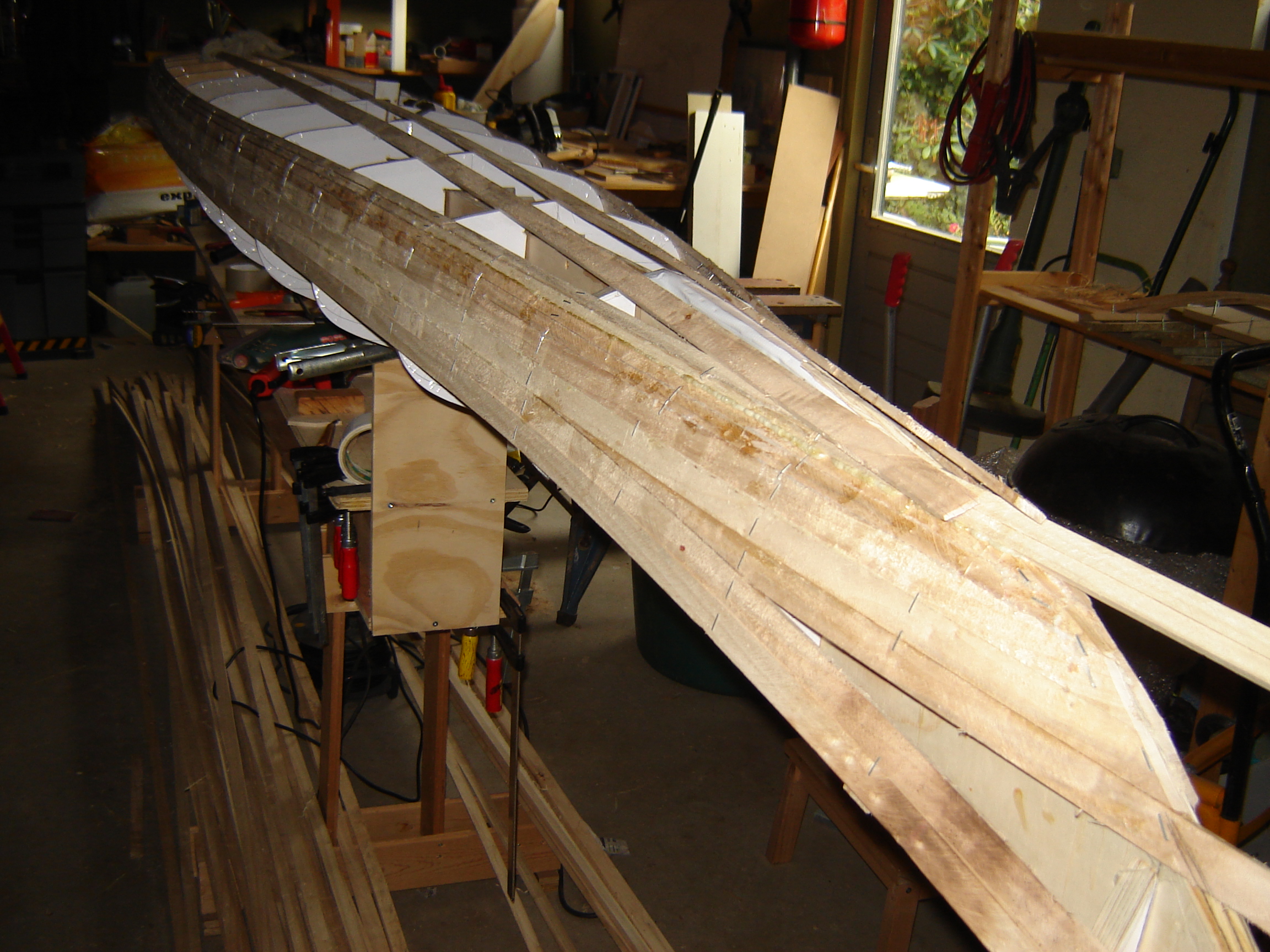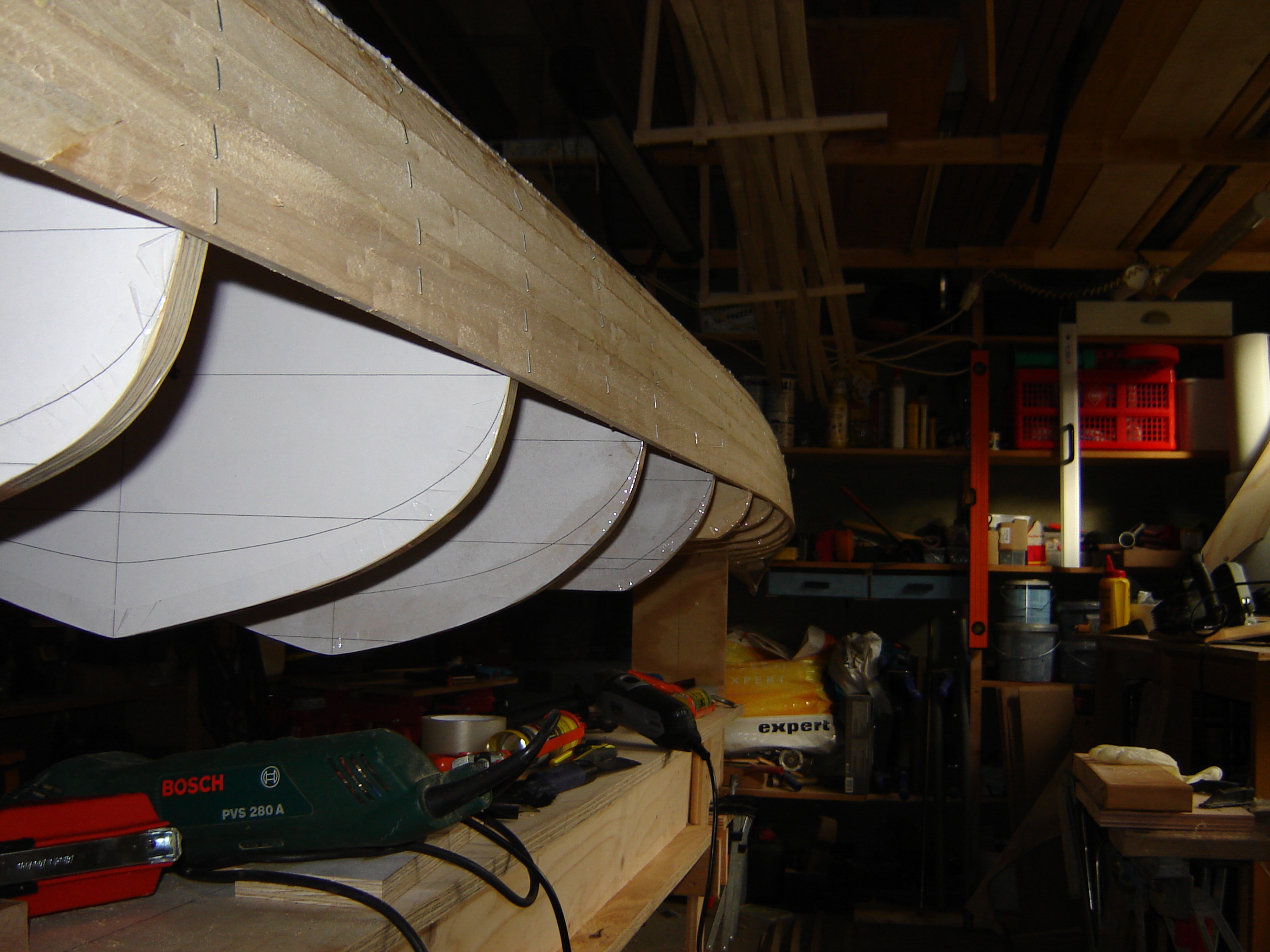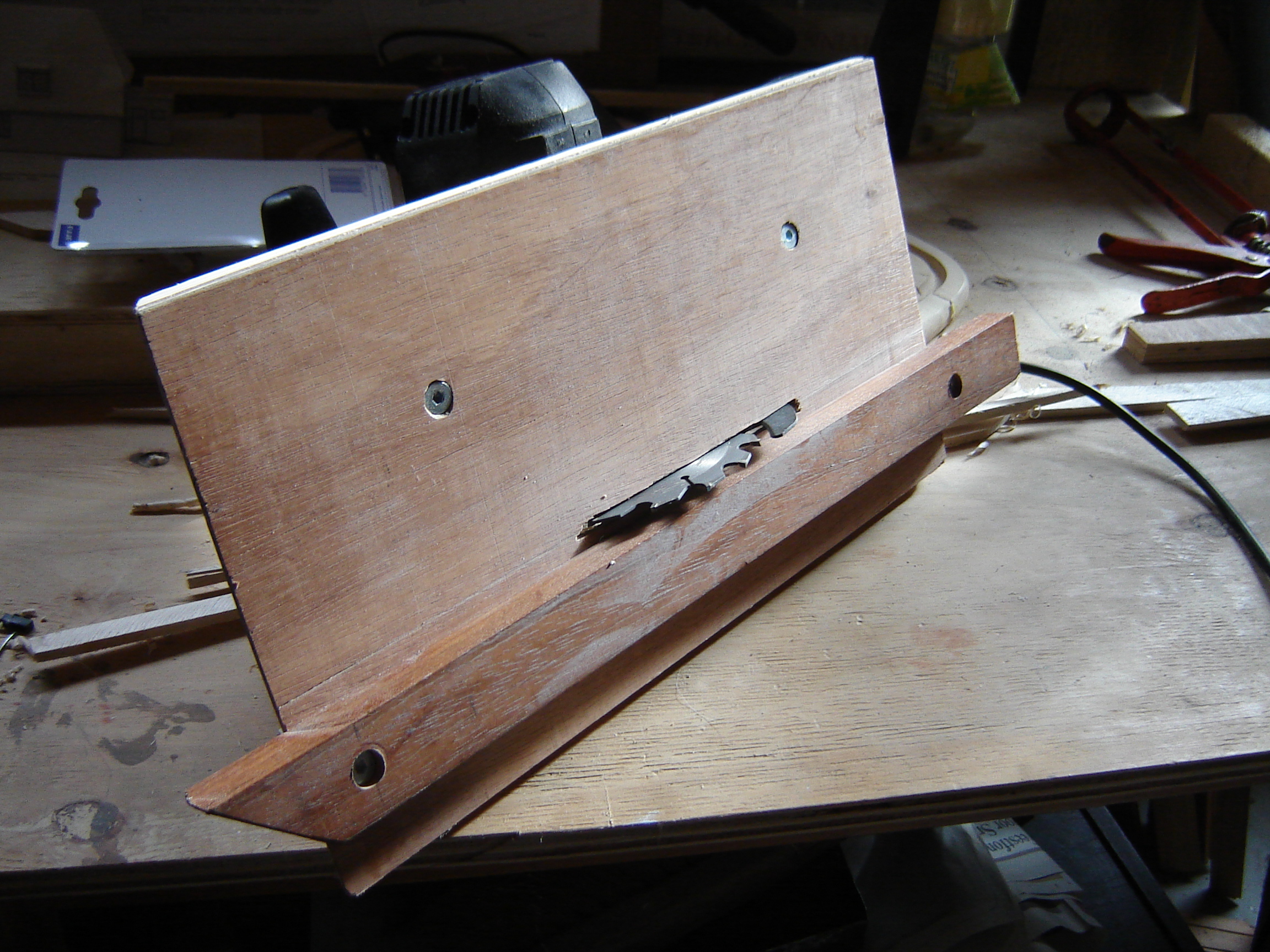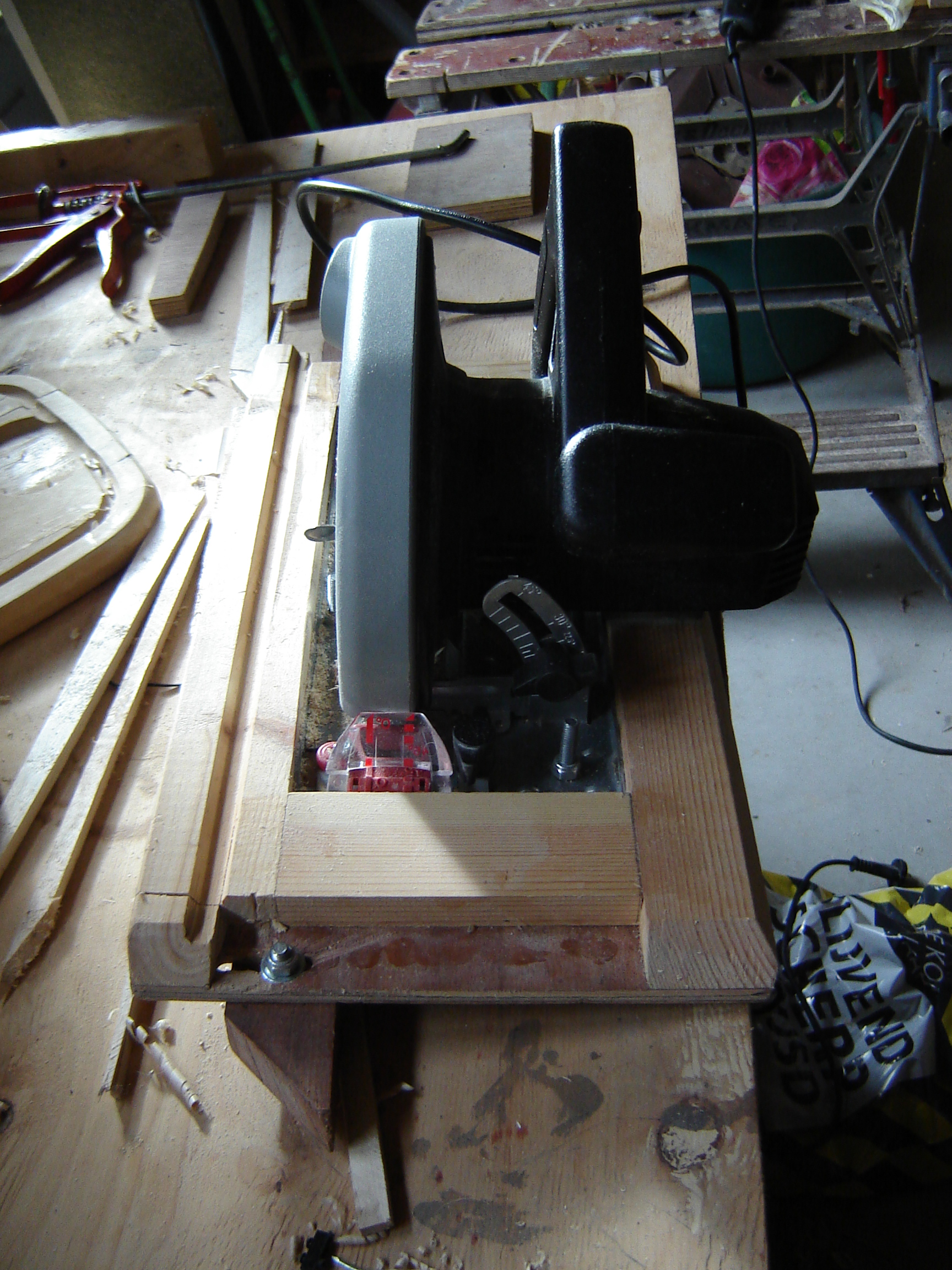I found it difficult to find the exact shear line on the forms. So I tried to find the line with a strip. I did not have straight strips. The poplar boards where straight but the wood had a lot of tension because of different growing speed. After ripping the strips wobbled. Afterwards I think that the best remedy had been to scarf the straight parts together into one long strip. But I used the strips as they where. I made the shear line symmetrical on both sides.
For the stem and the bow I needed the heat gun to get the strips in place. I found it difficult to spread the heat evenly over the strip. Maybe all things will come right later. I did follow the shear line with 2 strips. The rest of the strips followed the chine more at the ends so I need cheater strips but that is not a problem.
I found it difficult to make the right bevel. So I decided to staple the strips with no bevel at all and later fill the gaps with thickned epoxy. I tried to use no glue at all but had so much difficulties with lining the strips between the forms that I decided to use a gap filling glue. It is the PU-glue which is used in wood construction. This one gives transparant glue lines. The problem is that epoxy does not hold very well on PU. So I have to use a primer to tackle that problem after wetting out the wood.
At the chine I did split my strips (22 mm wide) into 10.5 mm wide strips. I used a Japanese razor saw (not a genuine Japanese saw but a European copy sold by Aldi for 12 euro’s, handle with two blades) and a kind of miter box for splitting. The saw line is not totally straight but I put the devided strips next to each other so that it fits. Afterwards I did see that the line wobbles. Maybe that will disappear when I have sanded the hull.




